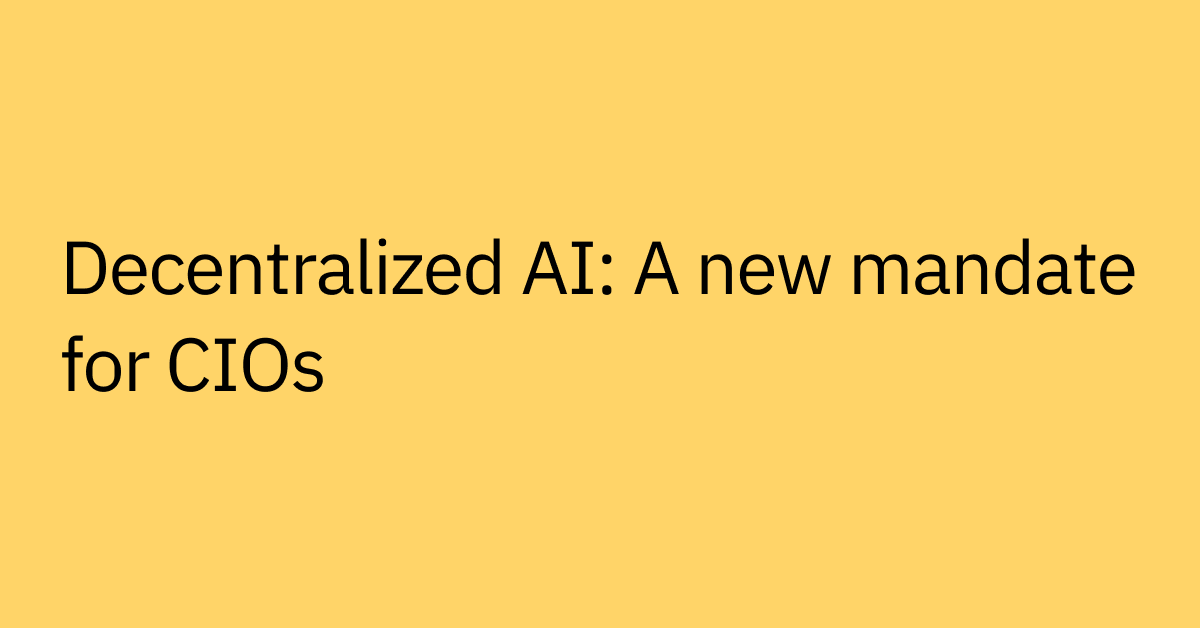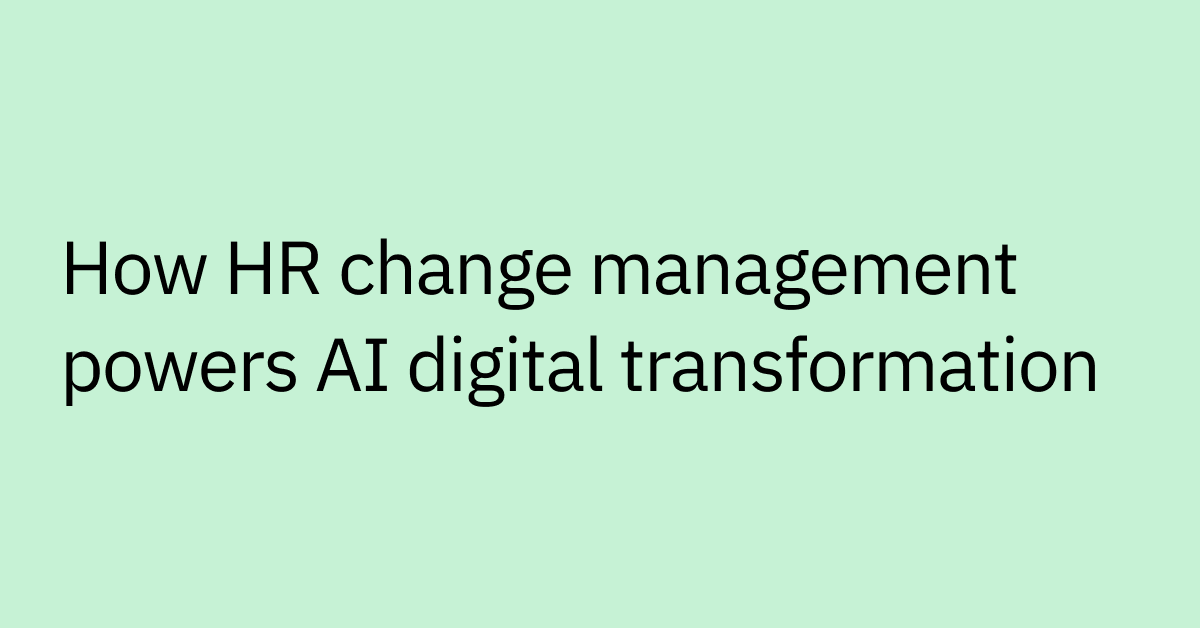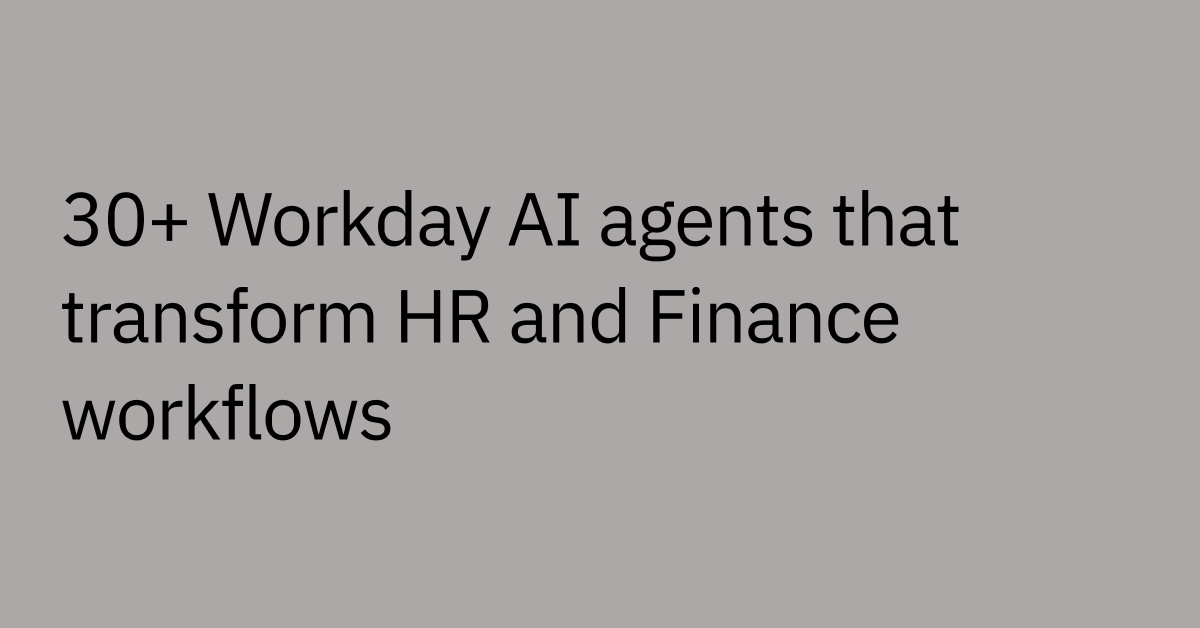Table of contents
Highlights
- Digital transformation succeeds when technology, processes, and people align around clear, measurable business outcomes.
- Initiatives can suffer from hidden challenges like technical debt, low adoption, rising cloud spend, and weak change management practices.
- AI and automation mitigate these risks by accelerating planning, automating workflows, and improving adoption through intuitive, conversational interfaces.
- The greatest gains come from adaptive agentic systems that learn, unify processes, and scale without constant redevelopment.
- Moveworks helps enterprises cut transformation costs by automating complex business workflows, ease of adoption, and accelerating value realization.
In 2018, businesses invested an estimated $1.3 trillion in digital transformation — yet studies suggest that many of those initiatives fell short of expectations.
Now, with global digital transformation spending projected to reach nearly $4 trillion by 2027, organizations have a significant opportunity to evolve how they operate, support employees, and drive long-term value.
Still, greater investment doesn’t always lead to better outcomes.
What makes the difference? It's not just about how much you invest — it’s about how well you prepare.
Many organizations are learning that technology alone isn’t enough.
Real progress happens when tools, processes, and people are aligned around clear business goals. Without that alignment, even well-resourced initiatives can lose momentum.
Recognizing the most common pitfalls — and learning how to avoid them — is essential to building a transformation strategy that delivers lasting results.
6 challenges that can derail your transformation — and how to overcome them
Once you’ve laid the groundwork for transformation, the next step is recognizing what might get in your way.
From leadership misalignment to low employee adoption, the roadblocks aren’t always obvious — but they’re often avoidable.
The six challenges below are among the most common reasons digital transformation underperforms — along with actionable ways to address each one before it slows your momentum.
6 challenges that can derail your transformation — and how to overcome them
Once you’ve laid the groundwork for transformation, the next step is recognizing what might get in your way.
From leadership misalignment to low employee adoption, the roadblocks aren’t always obvious — but they’re often avoidable.
The six challenges below are among the most common reasons digital transformation underperforms — along with actionable ways to address each one before it slows your momentum.
1. Lack of clear vision and alignment
Digital transformation projects often start with plenty of enthusiasm, but that momentum quickly loses steam when leadership isn't aligned on the end goal.
Without a unified vision, different departments may end up pulling in different directions, creating confusion and competing priorities that slow progress.
This misalignment typically happens when organizations focus too heavily on implementing technology, without first defining the business outcomes they actually hope to achieve.
The result? Teams get impressive tools that don't actually solve real problems or advance strategic objectives.
Executive buy-in becomes critical here. When key stakeholders aren't fully committed to the transformation (especially over the long term), they may not execute initiatives quickly enough or provide the resources needed for success.
Without this top-level support, transformation efforts can stall at the first sign of resistance.
Things can worsen when communication breaks down between leadership and implementation teams. Conflicting priorities and poor coordination make it difficult to keep momentum going.
How to avoid misalignment
Building a successful transformation starts with creating a clear roadmap that ties technology decisions directly to business goals. This means setting specific, measurable outcomes. Vague aspirations like "becoming more digital" won't cut it here.
Set up your own "Center of Excellence" for your transformation initiative, or well staffed and enabled core team driving and executing on your strategy.
Executive sponsorship also needs to be more involved than just giving the go-ahead. Leaders should:
- Actively communicate the vision.
- Prioritize transformation projects when conflicts arise.
- Demonstrate their commitment through resource allocation and decision-making throughout the entire transformation.
In fact, alignment at every level requires ongoing effort. Regular check-ins, clear communication channels, and clear escalation paths help keep everyone moving in the same direction.
Your digital transformation strategy needs to balance both the tech components and the cultural changes needed to support them.
2. Insufficient employee buy-in and adoption
Even the most thoughtfully planned transformation efforts won’t be successful if you roll out the technology without knowing what your people think or what problems it is intended to solve.
The problem often starts with how new systems are introduced. If employees find the tech hard to use or feel like it adds extra work instead of making their jobs easier, adoption rates will stay low — no matter how much training you provide.
But change fatigue plays a role, too. When you roll out multiple new systems without giving teams time to adjust and learn, employees could become overwhelmed and resistant to more technological changes.
This is especially common in companies that treat digital transformation as a series of separate technology rollouts rather than a coordinated effort.
Without a proactive approach to identifying and solving employee pain points, and solicting and addressing their feedback, your transformation projects could create as many problems as it solves.
Teams may end up juggling new business processes alongside old ones (or worse, coming up with non-standardized workarounds), leading to decreased productivity and growing frustration.
How to support employee adoption
Putting employees at the center of your transformation strategy can dramatically improve your adoption rates. Be sure to put your employee user experience first, deploy multi-channel communications, and have clear training and feedback opportunities.
Put employee experience first
This means choosing AI-powered solutions with intuitive, conversational interfaces that make adoption easier by meeting employees where they already work. Instead of making them learn new interfaces, conversational AI lets teams get support and complete tasks using natural language within familiar tools like Slack, Microsoft Teams, or a web browser.
Multi-channel employee communications
Strong communication throughout the process can also help employees understand not just what's changing but why these changes benefit them directly in their day-to-day work. Choose both top-down outreach ( i.e. leadership advocacy during all-hands events) and bottom up, multi-channel communications with newsletters, email, messaging platforms and more.
Personalize, educate, and share benefits
During digital transformation, it's important to identify similarities and differences across your various organizational segments. You're working with IT leaders, HR experts, or operations gurus – each with very different priorities and concerns. Understanding these distinctions helps you tailor communication and strategies more effectively.
Similary, training and onboarding should be personalized to these core team or user groups, and focus on the quick wins and practical applications for these personas instead of trying to cover every feature for every user.
Learn how HR leaders can automate employee support with AI to drive better adoption and employee satisfaction.
3. Siloed systems and disconnected data
When applications don’t talk to each other, employees are left navigating disconnected tools and outdated systems — which can stall even the best transformation efforts.
When employees have to search through multiple systems to complete simple tasks, productivity drops quickly and frustration builds.
These silos typically develop over time as different departments adopt their own tools without coordination.
The result is a complex web of applications that don't integrate, forcing employees to manually transfer data between systems or maintain duplicate records — making it harder to maintain a single "source of truth."
And that source of truth is critical: without it, organizations struggle with inconsistent reporting, slower decision-making, and compliance risks.
When employees can’t easily find the information they need or complete tasks in one place, they lose time — and trust in the system. Instead of streamlining operations, poorly integrated systems add more complexity to routine, everyday tasks.
Disconnected tools also make it challenging to deliver smooth digital experiences. When systems can't share data effectively, employees likely encounter dead ends, broken workflows, and inconsistent information that lowers confidence in the new tools.
Integrating newer SaaS platforms with older, on-prem systems only adds to the challenge — especially when those legacy systems weren’t built for interoperability. Without a clear strategy, organizations may find themselves managing an increasingly fragmented tech stack.
How to overcome silos
Your goals should be to choose solutions that unify knowledge and workflows across your existing technology stack. Prioritize interoperability through solutions like middleware, APIs — or even easier still —platforms with robust integration capabilities that unify data sources and provide a seamless digital experience.
Real transformation means successfully connecting with your current systems — not solutions that force you to uproot your entire digital ecosystem.
Advanced AI-powered solutions can bridge knowledge gaps by pulling information from multiple sources and presenting it through a single, unified interface. This lets employees find what they need without learning where specific information lives or how different systems connect.
Prioritize advanced solutions that pinpoint gaps in knowledge resources and automatically provide answers to common employee questions. This proactive strategy can help bridge any information gaps while easing the documentation management workload of support teams (like IT and HR).
4. Poor change management and communication
When change management is weak or missing, employees are left confused, frustrated, and ultimately unprepared — making resistance more likely before the project even begins.
When communication is unclear or inconsistent, misinformation or shoddy 'workarounds' fill the gaps, eroding trust before your transformation takes off.
This can happen when organizations focus heavily on the technical aspects of transformation while neglecting the people and processes that enable adoption. Without proper change management, even well-designed systems can run into adoption challenges because people don't understand how to integrate new tools into their daily work.
Data quality issues and a lack of feedback mechanisms make these problems even worse. When employees can't easily report problems or suggest improvements, negative experiences will only continue and likely spread throughout the organization.
Ineffective or unclear communication about timelines, expectations, and benefits creates uncertainty and damages trust. This lack of clarity can leave employees concerned about job security, heavier workloads, or their ability to adapt to new systems, which may lead to resistance instead of cooperation.
How to strengthen change management
Putting an intentional, organization-wide change management strategy in place can help set your transformation up for success from the start.
It should include clear communication about why changes are happening, what employees should expect, and how they'll be supported throughout the entire transition.
Be transparent and provide clear, consistent communication to help build trust and keep unfounded concerns from creeping in.
Giving regular updates on progress, challenges, and adjustments also demonstrates leadership’s dedication to making sure the transformation benefits everyone — not just the C-suite.
Feedback loops can help you find and proactively address issues quickly, before they become major problems. Give your employees ample opportunities for input, establish regular check-ins or office hours, and set up communication channels to receive feedback and address questions.
Sophisticated AI-powered tools can support change management by providing insights into how employees are adapting to your changes and where additional support might be needed based on real-time data.
5. Underestimating the importance of employee experience
When you focus solely on new technology capabilities, without considering day-to-day employee experiences, you risk your digital transformation falling short.
If systems are too complex or hard to use, employees eventually find their own workarounds or just ignore the new tools altogether.
The gap between IT priorities and employee needs can leads to solutions that technically work but fall short when it comes to real-world usability. Features that seem impressive in demonstrations may actually add more complexity to routine tasks.
Remember: Complex, hard-to-use systems discourage employee adoption regardless of what they're capable of.
If getting help means navigating multiple menus, filling out lengthy forms, and waiting for responses, employees will probably avoid using the system whenever possible.
How to enhance employee experiences
Designing transformations with the end user in mind helps you ensure that the new systems actually make daily work easier instead of complicating it. This means prioritizing user-friendliness, intuitive interfaces, and integration with existing workflows.
A clear digital strategy that brings long-term value can also help employees understand the benefits of temporary disruptions. When people can see how new tools will make their jobs easier, they'll be more willing to invest time in learning and adoption.
Letting employees be part of the transformation process early can increase buy-in. This might include involving them in tool selection, gathering feedback during pilot programs, or creating employee champions or super-users who help with training and support.
6. Failure to measure success properly
Without clear success metrics and ongoing measurement, you’ll struggle to demonstrate value or determine what's working and what needs adjustment.
According to Gartner, CIOs should focus on key metrics and KPIs that highlight their IT infrastructure’s ability to manage growing workloads while driving efficient business growth. This focus on scalability metrics helps transformation efforts support long-term organizational success.
Of course, for accurate, relevant metrics, you’ll need:
- Reliable monitoring tools
- Consistent access to up-to-date data
- Regular KPI reviews and adjustments to reflect business goals and market shifts
Deficiencies here typically happen when organizations define transformation success using vague terms instead of specific, quantifiable outcomes, lack proper data governance and management, or have fragmented alignment across leaders and team.
Without having established, aligned, and easily measurable goals, it’s nearly impossible to track progress or justify continued investment.
How to plan for long-term success
You’ll need to define KPIs upfront and track progress consistently to create a solid foundation for measuring the success of transformation initiatives.
Use metrics that cover both technical performance and business outcomes, like:
- Employee satisfaction (ESAT): How satisfied employees are with new tools and functions
- Employee adoption rate: Percentage of employees actively using new digital solutions
- Employee productivity hours gained: Time saved or productivity improvements
- Tech stack ROI: The return on investment for integrated digital tools
- Mean time to resolution (MTTR): How quickly employee issues are resolved
- Employee churn rate: Percentage of employees leaving the organization, which indicates satisfaction and engagement
- System usage and implementation metrics: Includes ease of use, time to implement, and number of digital technologies successfully adopted
AI-powered tools can help you evaluate success and uncover areas for improvement by delivering detailed insights into how employees engage with systems. This data-backed approach supports ongoing optimization, helping to replace one-time fixes with continuous, measurable progress.
Empower employees and ensure success with Moveworks
Digital transformation failures may be common, but they're not inevitable.
Success depends on centering transformation efforts around your employees and removing the daily bottlenecks that slow them down — something that Moveworks agentic AI platform is built to help with.
Moveworks helps enterprises overcome the key challenges that often derail transformation initiatives:
- Drives adoption by using conversational AI to provide instant support and answers — removing the friction that comes with brand-new tools and processes.
- Breaks down silos by unifying knowledge, workflows, and systems, so employees can get instant access to the information they need — no matter where it’s at.
- Delivers measurable results by automating routine tasks like password resets and PTO requests, and surfacing actionable insights that help leaders understand exactly where employees are getting stuck.
With Moveworks, you can track progress, maximize ROI, and free up your teams to focus on higher-value work. By removing barriers and empowering employees with intuitive AI support, Moveworks enables organizations to turn digital transformation from a challenge into a competitive advantage.
See how Moveworks can help you accelerate your digital initiatives and realize the full potential of your tech investments.



